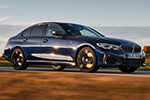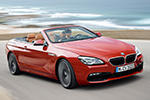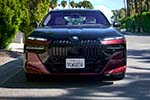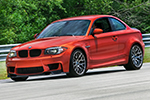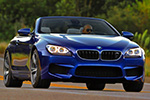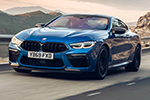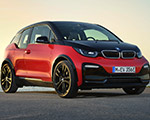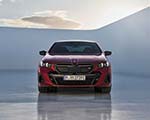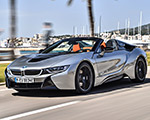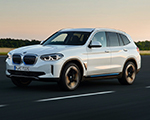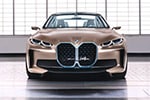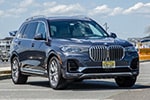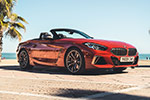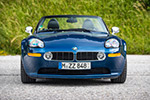The 2026 BMW iX3 debuts far from unchallenged. The luxury EV SUV segment is actually pretty packed these days. One of the most obvious rivals in the segment comes from none other than Porsche, an OEM similarly proud of its performance and engineering heritage. From exterior styling and interior design to performance and technology, these SUVs are not only fiercely competitive but also showcase how legacy automakers are reshaping their identities in the electric era.
Exterior Design
Initial impressions of the IX3 and Porsche Macan EV are, generally, favorable. Both look fresh and new relative to their gas-powered counterparts. But each is still immediately recognizable, sporting the “face of the brand” as it were. In the iX3’s case, that means a smaller grille and redesigned headlights. In the Macan EV’s case, it means a grille more or less deleted and — wouldn’t you know it — redesigned headlights. Around back is more or less the same story. While the Macan EV definitely has a cleaner look, a light bar has the distinct possibility of aging the car in the coming years. Meanwhile, the iX3’s Neue Klasse taillights are likely to look new for the foreseeable future. After all, it’s a design that will be shared across all Neue Klasse models.
From the side, it’s clear that the iX3 and Porsche Macan EV share an identical length at 4,782 mm (188 inches). The Macan EV does a slightly more convincing impression of a sport SUV, with a more aggressive slope to the rear hatch. The iX3 is also just a hair taller than the Macan EV (0.4 inches, or 10 mm), and slightly narrower. Overall, the dimensions give the Macan EV a little bit of a sportier appearance. That said, we wouldn’t call the iX3 boring.
Interior Design
The Macan EV does something lots of good BMW EVs have done in the past. Its interior largely mirrors what you’ll find in the gas-powered cars, which is more good news since Porsche interiors are some of the best in the business. The well-integrated screen and plethora of quality materials make the Macan EV feel properly upscale. The iX3, by comparison, looks like the future. With no gauge cluster at all, it’s a radically different place than the Macan EV’s cockpit. The Macan EV offers a maximum of 47.6 cubic feet of cargo space, while the iX3 offers a total of 61.8 cubic feet. Probably a byproduct of the Macan’s more aggressive roofline.
Performance
The Porsche Macan EV and BMW iX3 offer comparable balance. A 48:52 front/rear bias on the Macan and 49:51 front/rear bias for the iX3 mean both should feel relatively poised. The standard Macan EV makes 335 horsepower, which is down from the iX3 50 xDrive that BMW’s showed off so far. The BMW makes 45 kW/469 hp and also comes standard with xDrive. Meanwhile, the base Porsche Macan EV is in fact rear-wheel drive. Currently, the Macan’s top tier grades will definitely smoke the iX3 in a race; the Macan Turbo (electric) cranks out 630 horsepower.
Technology
As we briefly touched on earlier, the Macan EV boasts some smooth tech integration. But it’s likely the iX3 is a more technically advanced vehicle — both underneath the sheet metal and in terms of technology that drivers actually interact with. Practically, however, both will offer a similar ownership experience. Both offer a digital key, voice-powered commands for navigation, Apple CarPlay/Android Auto, and more. Interestingly, while Porsche has already said CarPlay Ultra will come to many cars in the lineup, BMW has already said no to CarPlay Ultra.
The BMW iX3 and Porsche Macan EV appeal to slightly different priorities. The Macan EV leans toward sportiness and familiar luxury, while the iX3 delivers forward-looking design, more space, and balanced performance. Both promise to satisfy drivers eager for premium electric SUVs, but your choice may ultimately come down to whether you prefer Porsche’s athletic refinement or BMW’s progressive vision of the future. There’s also the issue of affordability. The iX3 starts at around $60,000; the Porsche Macan EV is considerably more expensive at $78,000.






































